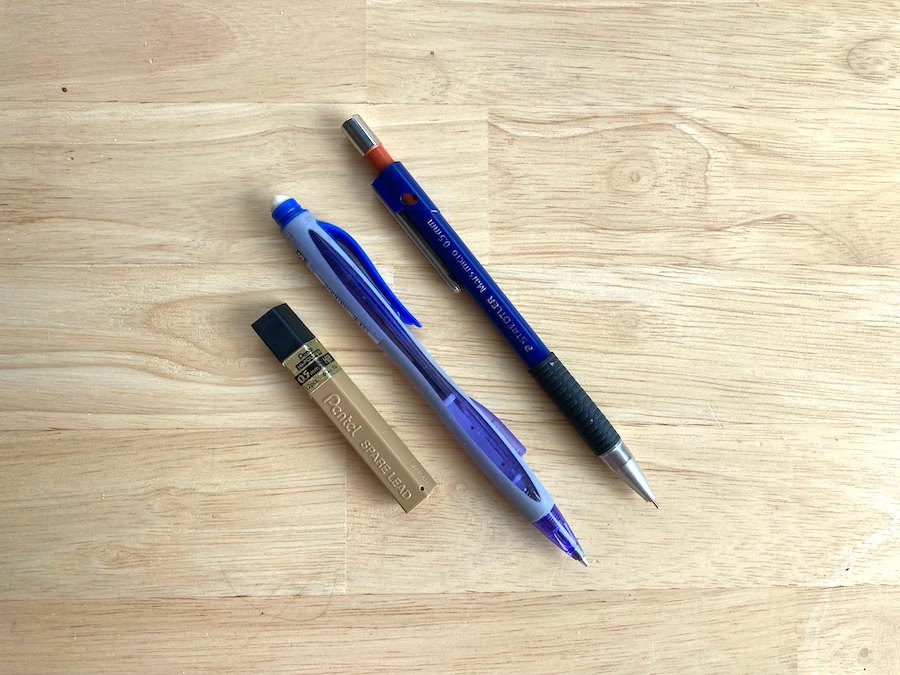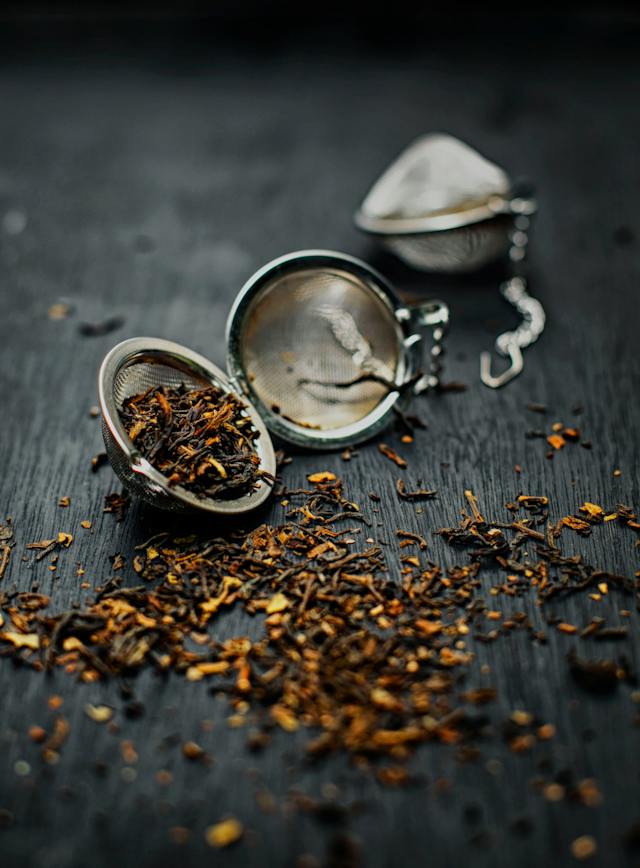Whether you are a committed writer, we’ve all used a pen or pencil. And with so many different colors, shapes, and forms, it’s easy to accumulate many different kinds.
I just did a count in the house and found 5 pens and 2 pencils (far less than what I expect the average household has), yet I never seem to have one and can’t find one when I need it!
Despite a technology-dominated world, pens and pencils are still popular tools today, with the global market expected to rise approximately 4% per year from 2023 to 2030. Not to mention, it’s already worth over 17 billion USD!
Suppose you’re trying to lead a more environmentally sustainable way of life. In that case, you’ve probably questioned how eco-friendly a pen or pencil is. The good thing is you’re already thinking consciously, which is the first step in making the right decision for you and the planet.
In this article, we aim to rewrite the pen vs pencil story to give you the facts on how eco-friendly (or not) the different varieties are.
Are pens more eco-friendly than pencils?
As one of the most asked questions, you would assume that we have a definite answer to this question.
Part of the problem is, unfortunately, that there are just so many kinds of pens and pencils.
Pencils are more eco-friendly than pens, but some conditions are attached to this rule – read on to find out what they are.
Are wooden pencils eco-friendly?
Whether it’s due to their more natural appearance, I’ve typically viewed the disposable wooden pencil as one of the most eco-friendly writing implements.
Wooden pencils are usually derived from softwood trees like the cedar tree, which have properties that don’t easily splinter or warp. These days, it’s common for wooden pencils to be made from reforested wood, which helps to counteract deforestation.
But what about the inside material of a pencil?
We typically refer to pencils as ‘lead pencils,’ but pencils have never contained lead. They include graphite, a non-toxic and more stable substance that looks like lead. In fact, the term ‘lead pencil’ is a mistaken term dating back to the ancient Romans who used pieces of lead to draw – of course, the Romans didn’t realize the potentially lethal exposure they were putting themselves through.
Graphite is a non-renewable resource mined for use – and we all know about the negative impacts of mining on the environment.
In some instances, pencil graphite is artificially made to reduce the need for mining. However, this process involves using crude oil products and other chemicals, reducing the end-product’s eco-friendliness.
For the most eco-friendly wooden pencil:
• Look for options made from sustainably sourced, untreated wood and
• Choose a sort that doesn’t contain any glues or paints.
How eco-friendly are mechanical pencils?
You may be unfamiliar with the term’ mechanical pencil’, but there is a high chance that you’ve seen one before.
A mechanical pencil is a type of pencil with a casing that allows for the core (the graphite) to be replaced, eliminating the need for sharpening.

I’ve always loved using a mechanical pencil – sharpening shavings can be messy! But does having a refillable plastic chamber make the mechanical pencil more eco-friendly vs. a regular pencil?
While recycled PET plastic mechanical pencils and plant-based options are relatively common today, we all know most plastic waste is in landfills or oceans.
For the most eco-friendly mechanical pencil:
• Use one made from recycled materials, and
• Try not to lose it!
Types of eco-friendly pencils
In addition to wooden and mechanical pencils, a few new pencil types have entered the market recently.
Recycled newspaper pencils
Made from around 80% recycled newspapers, the recycled newspaper pencil is generally a good environmentally friendly option. One thing to be aware of is that to stop your hands from going black – if you’ve read a newspaper, you’ll know what I mean – these pencils usually have a water-resistant gloss finish. Some companies are shady about what chemicals are used to achieve this effect. Extra research may be required to use a pencil aligned with your lifestyle goals.
Recycled coffee, tea & flower pencils
Yes, this is a thing you can buy – talk about reimagined!
If you’re after a wood-free pencil but love the natural look and feel of wooden pencils, this pencil design might be for you. These pencils are made from recycled coffee, tea, and flowers in varying quantities and are designed to quickly biodegrade.

The not-so-benign plastic pen
It’s crazy to think that the first plastic pen was made over 70 years ago and, given the lifetime of plastic, that pen may still be out there somewhere in the environment or ocean 🤯
And how about this: only approximately 5% of a pen is needed to physically write – the rest helps keep the pen together and make it what we know as a pen. This isn’t exactly great news for sustainability.
Single-lifetime plastic pens
I’m writing about the obvious here, but plastic pens, or anything plastic, don’t serve our planet well. They rely on oil (and other chemical) production and don’t biodegrade. When you consider that Americans throw away approximately 1.6 billion pens annually (many of which still work fine), you can understand why they are of environmental concern.
Refillable plastic pens
Refillable plastic pens help to reduce the need to throw away an entire pen just because the ink has run out.
There are two standard types: one with a new ink and writing tip component or one where you can refill your ink tube from a bottle of ink. Using a bottle of ink to fill your pen is more sustainable.
Recycled plastic pens
If you need a new pen and can’t find a refillable or plastic pen alternative, choose a pen made from recycled plastic. In the first instance, you’ll at least support a company that had the initiative to investigate plastic recycling. You’ll also be reducing unnecessary consumerism.
Plastic pen & traditional alternatives
There are various alternatives to traditional plastic pens, including corn-based pens, bamboo pens, and the good old fountain pen for serious Harry Potter vibes!

Is pen ink eco-friendly?
Like the graphite in pencils, the ink inside your pen could hurt your eco-friendliness score.
Standard pen inks are made from a concoction of chemicals, compounds, and dyes, nearly all of which aren’t natural ingredients. These petroleum-based inks aren’t environmentally friendly. However, soy-based inks are on the rise and show promising results in being a more sustainable and healthier pen ink alternative.
Soy ink is still combined with other pigments, resins, and waxes, so it’s not considered 100% biodegradable. It takes a little longer to dry due to a lack of VOCs (volatile organic compounds). However, it is still definitely a healthier option to consider.
The answer to the great pen vs pencil debate
You’ve probably gathered that each pen and pencil type has advantages and disadvantages. As for the most eco-friendly writing implement…that depends on your usage habits.
If you like to remove mistakes, choose a pencil – whiteout/correction tape is not a sustainable option. You can also select a pen with a sustainably sourced natural rubber.
If you’re not one for pencil shavings, a mechanical pen is the way. They are also a great cost-effective option for someone who does a lot of writing and prefers to look/feel of plastic writing implement – be sure to use one you may already have lying around your home and double-check what refillable graphite size you need (usually written on the side of the pencil).
Suppose you’re constantly signing documents and marking student papers. In that case, you’ll likely need a reliable pen. Still, please stop accepting FREE pens from those conferences and events you attend! Many companies with these cheap marketing materials probably have yet to consider sourcing eco-friendly pens. Instead, choose a refillable pen likely to last you a lifetime, preferably one made from a recycled product or natural material such as bamboo. It’s also a good idea to choose a more eco-friendly soy-based ink.
Frequently Asked Questions
- Does a pen or pencil last longer?
According to the Guardian, your standard Biro can draw a straight line for about 2 miles before it runs out! Unfortunately, your typical lead pencil isn’t likely to last as long.
- Is writing on a computer better for the environment?
Just like the pencil vs pen debate, the answer to this one depends on how frequently you write and what the intended use of your writing is (e.g., sharing online vs personal use at home). For most people these days, the answer is likely to be digital. If you want to learn more about paper vs digital, check out this resource by the team at Except Integrated Sustainability.
- Can you compost pencil shavings?
Yes, absolutely. The best way to compost your pencil shavings is to soak them in water before adding them to your compost pile. This helps soften them so that they are easier to break down.
- Can you recycle plastic pens and pencils?
Both pens and pencils are hard to recycle – and no, recycling them does not mean placing them in your curb-side recycling bin! To ensure they are recycled properly, you must find a business that can break them down into different components.



